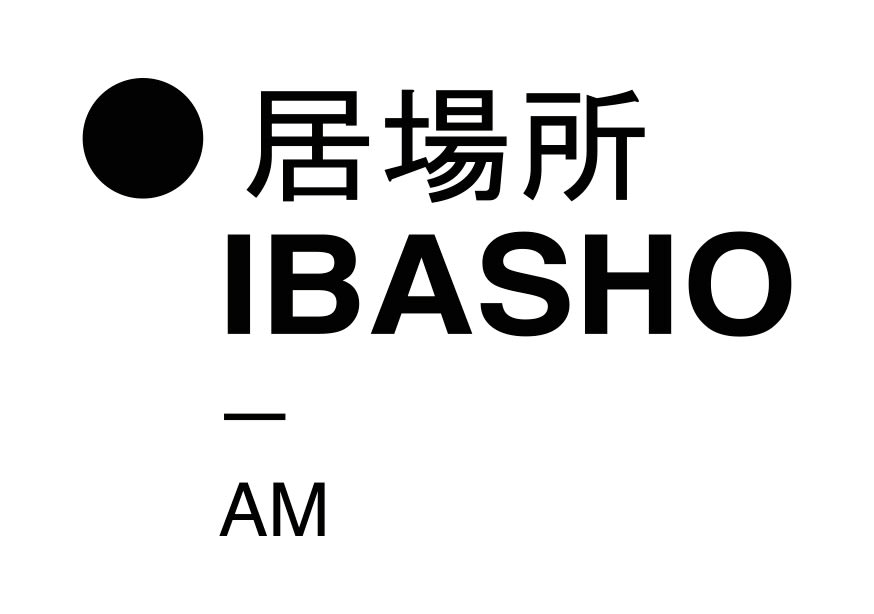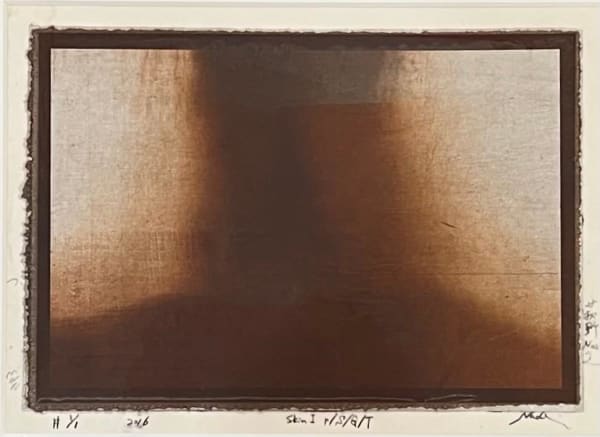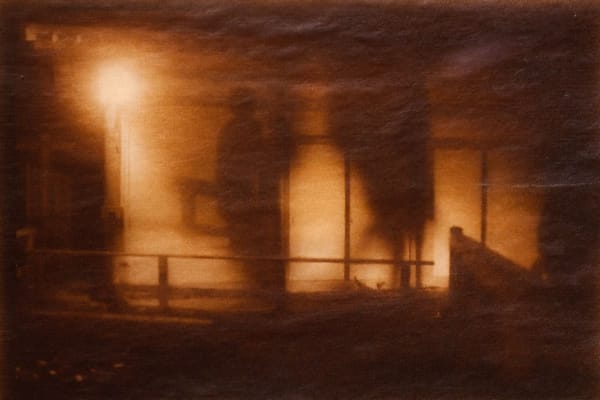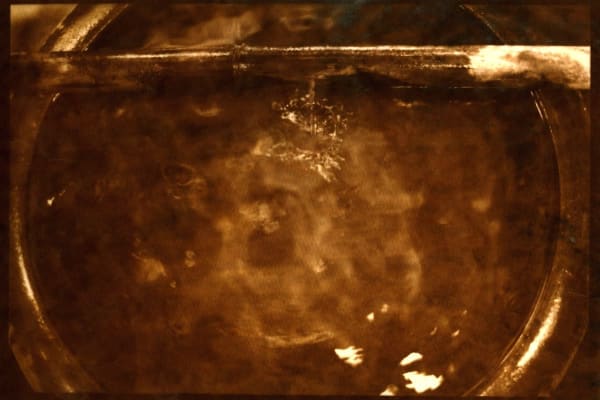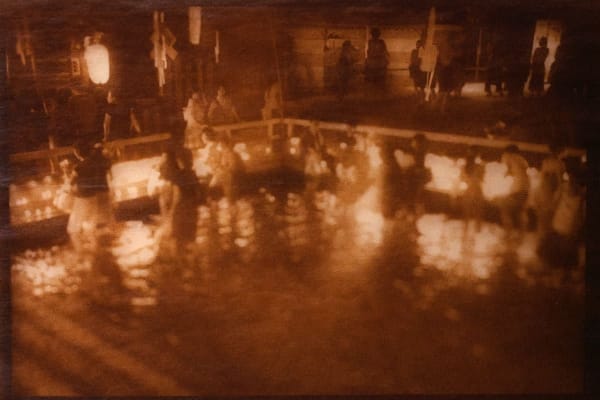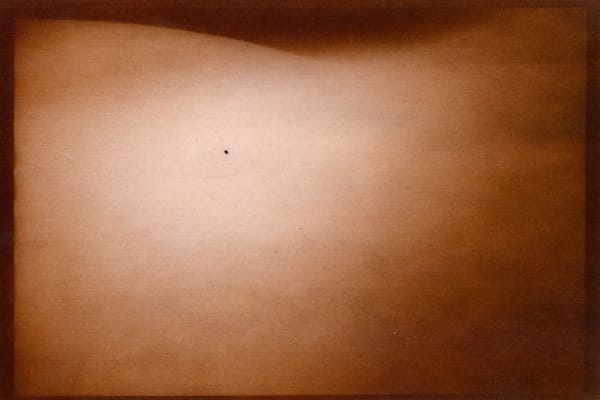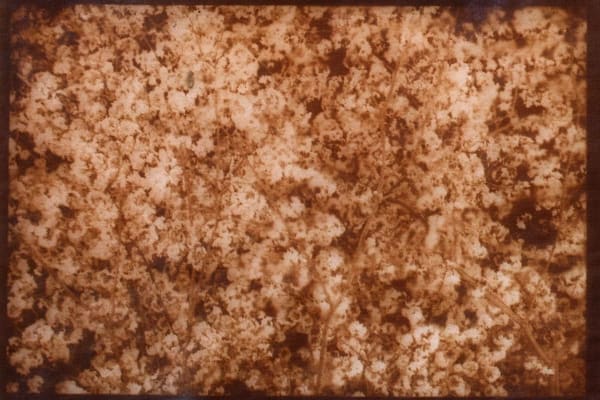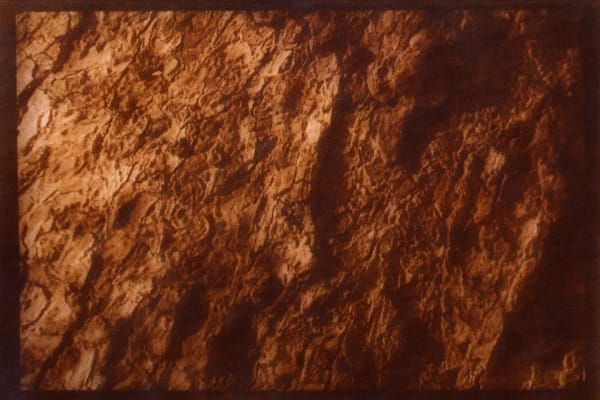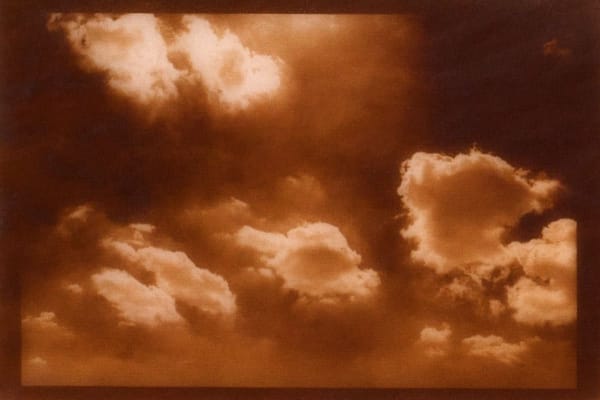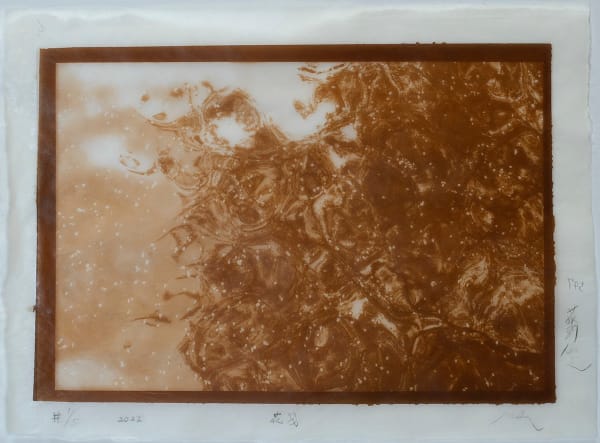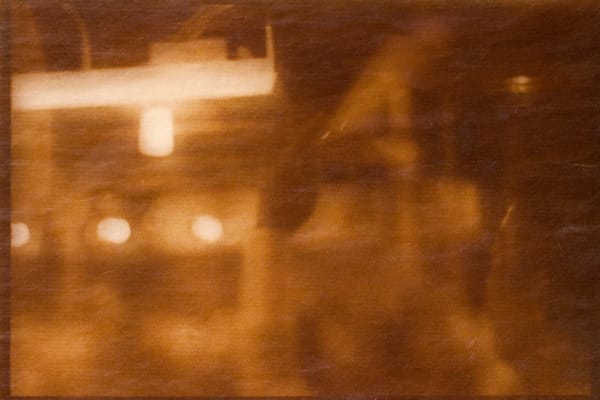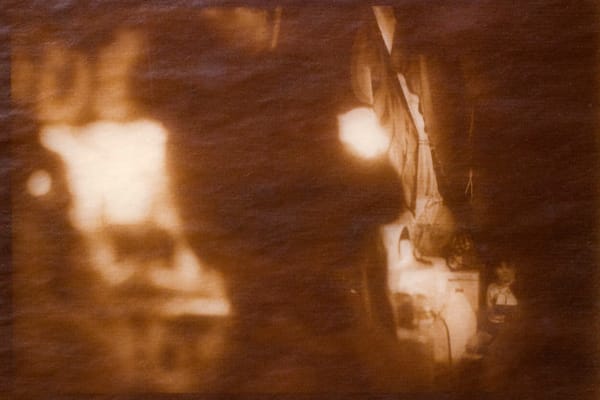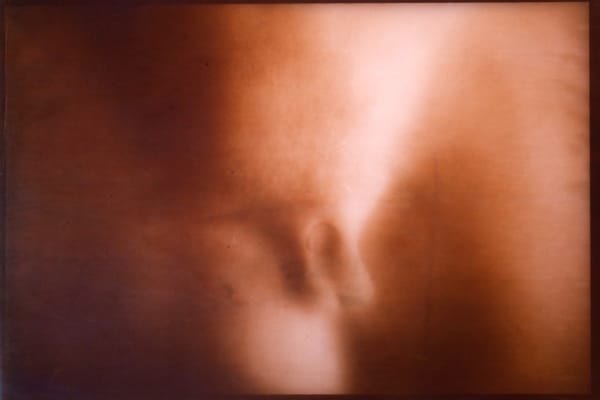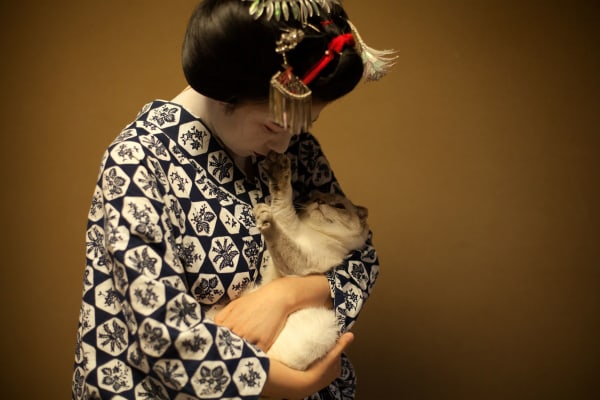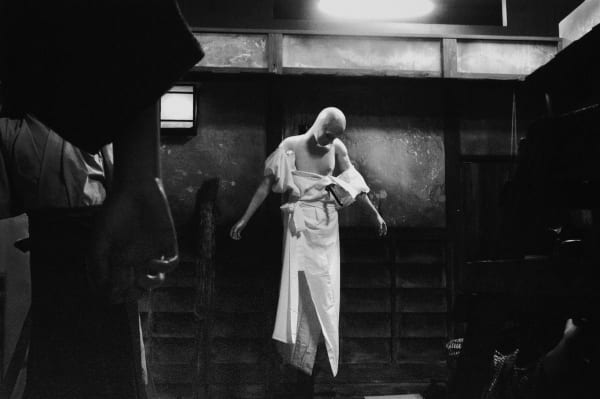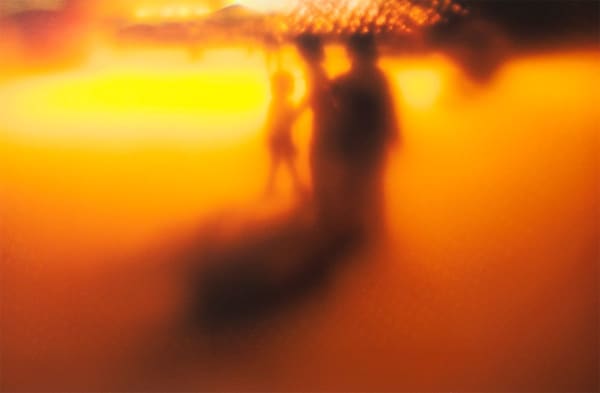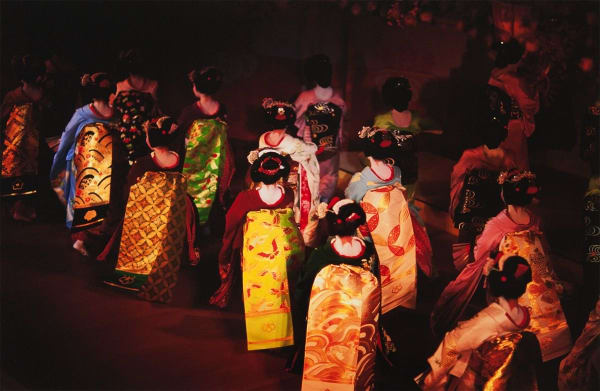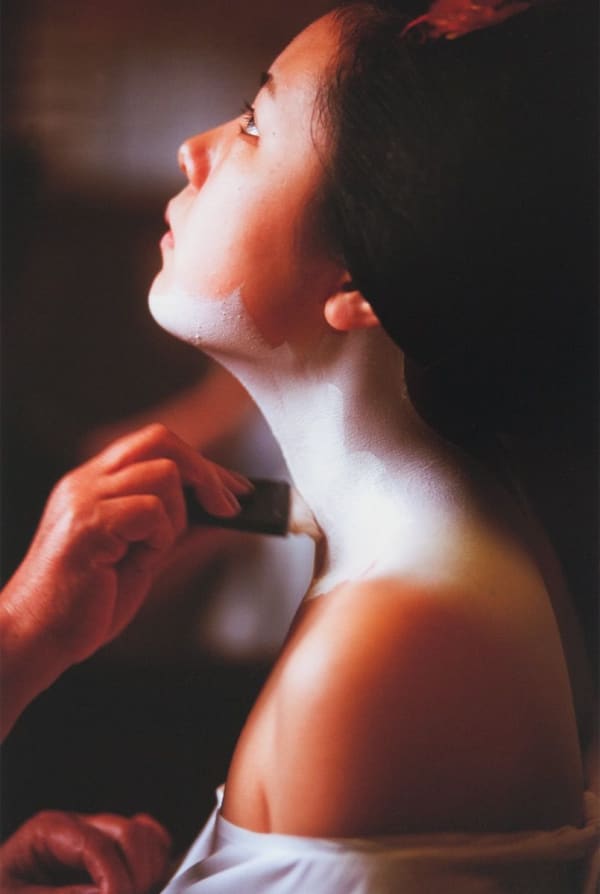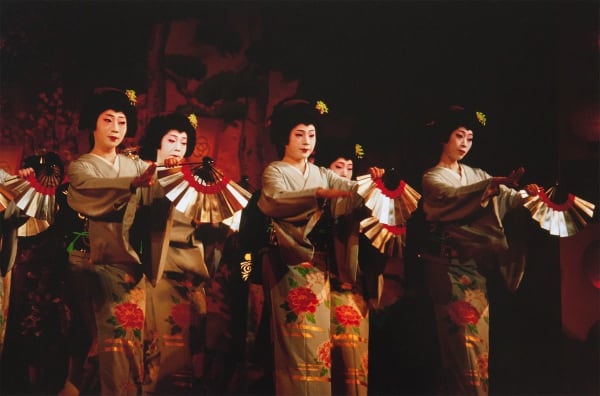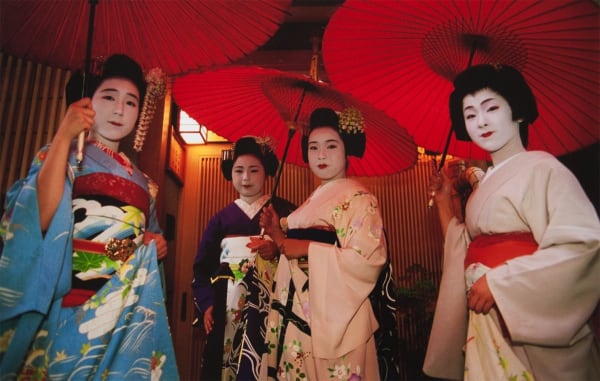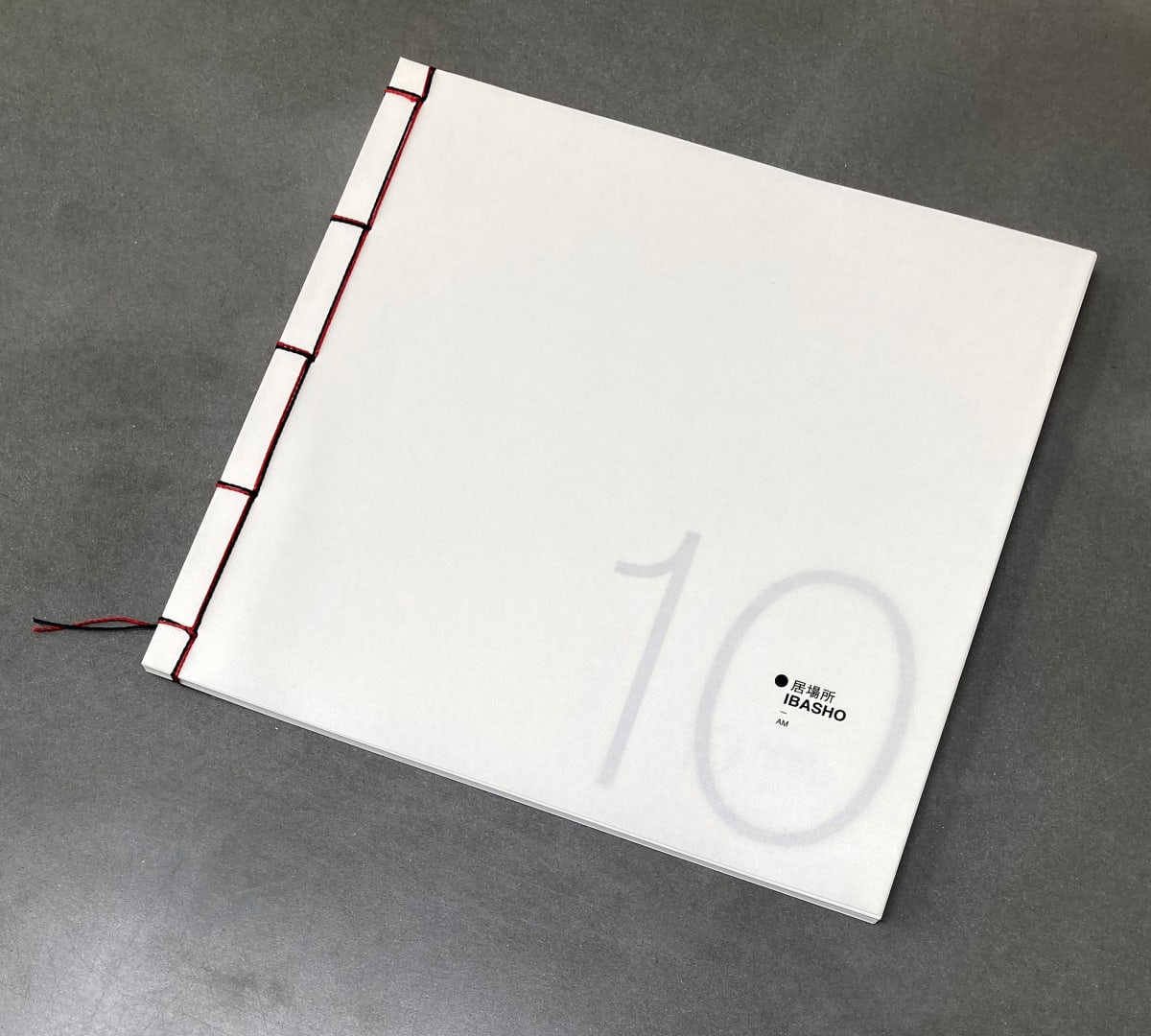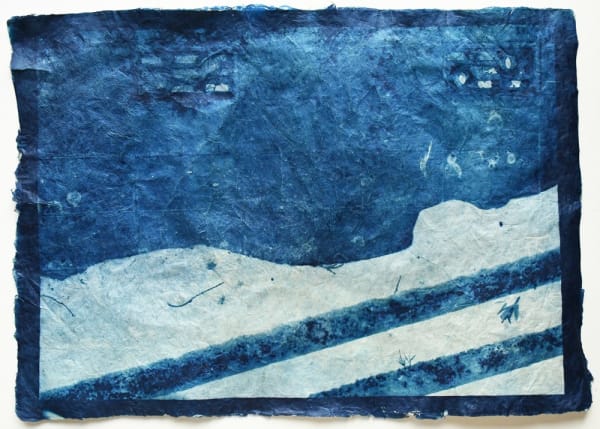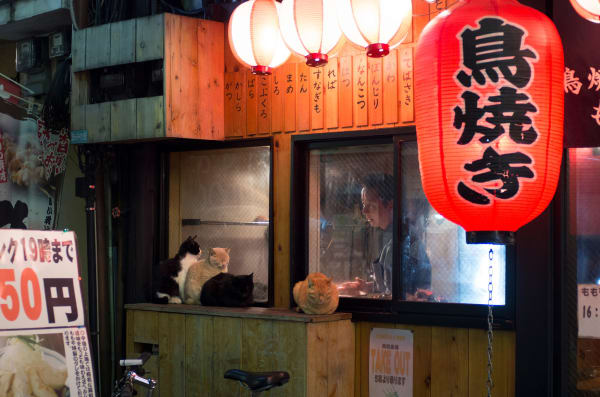Naoyuki Ogino
'Perfectly Imperfect': Ogino Naoyuki (1975)
Ogino’s works are made by using the technique of salt printing, the first photographic printing techniques used in the 1830s during the time of the invention of photography. In those times it was a struggle how to fixate the image that appeared after exposing the negative to sunlight. One had to overcome the impermanence of the image. Ogino fixates his quiet and intimate images printed on thin washi paper with natural bee’s wax, resulting in the paper becoming translucent, which gives the works an ethereal atmosphere. The sepia color of Ogino’s prints are inherent to the technique of salt printing and evoke a feeling of the passage of time, ‘mono no aware’.
For this exhibition, Ogino decided to reflect on wabi-sabi through water. Ogino feels that “wabi-sabi is based on a sense of solitude, melancholy, simplicity and finds part of its beauty in the transience or impermanence of the human world. Water is indeed impermanent, melancholic and minimally simple. On the other hand, water is also the essence of our body (more than 60% is water), and I believe that it has the power to remind us of the nature of flux, rebirth or oneness".
-
 Aspect, n.d.
Aspect, n.d. -
 MK-005 from Makai --Kyoto-- (MK), 2022
MK-005 from Makai --Kyoto-- (MK), 2022 -
 Goldfish, 2022
Goldfish, 2022 -
 Shimmer of Vanir 8, 2018
Shimmer of Vanir 8, 2018 -
 Shimmer of Vanir 7, 2018
Shimmer of Vanir 7, 2018 -
 Shimmer of Vanir 6, 2018
Shimmer of Vanir 6, 2018 -
 Shimmer of Vanir 5, 2018
Shimmer of Vanir 5, 2018 -
 Shimmer of Vanir 4, 2018
Shimmer of Vanir 4, 2018 -
 Shimmer of Vanir 3, 2018
Shimmer of Vanir 3, 2018 -
 Shimmer of Vanir 2, 2018
Shimmer of Vanir 2, 2018 -
 Shimmer of Vanir 1B, 2018
Shimmer of Vanir 1B, 2018 -
 Shimmer of Vanir 1A, 2018
Shimmer of Vanir 1A, 2018 -
 Tsukubai, 2016
Tsukubai, 2016 -
 Strata 2, 2016
Strata 2, 2016 -
 Strata, 2016
Strata, 2016 -
 Skin I p/S/G/T, 2016
Skin I p/S/G/T, 2016 -
 Skin I n/S/G/T, 2016
Skin I n/S/G/T, 2016 -
 Shadow, 2016
Shadow, 2016 -
 Sacred Fire, 2016
Sacred Fire, 2016 -
 Sacred Fire, 2016
Sacred Fire, 2016 -
 RO-001 from Room (RO), 2016
RO-001 from Room (RO), 2016 -
 Profile, 2016
Profile, 2016 -
 Prayer, 2016
Prayer, 2016 -
 Piggyback, 2016
Piggyback, 2016 -
 MK-005 from Makai --Kyoto-- (MK), 2016
MK-005 from Makai --Kyoto-- (MK), 2016 -
 MK-001 from Makai --Kyoto-- (MK), 2016Naoyuki Ogino, MK-001 from Makai --Kyoto-- (MK), 2016€ 1,450.00
MK-001 from Makai --Kyoto-- (MK), 2016Naoyuki Ogino, MK-001 from Makai --Kyoto-- (MK), 2016€ 1,450.00 -
 Mitarashi Pond, 2016
Mitarashi Pond, 2016 -
 Mitarashi Pond, 2016
Mitarashi Pond, 2016 -
 Membrane 05, 2016
Membrane 05, 2016 -
 Membrane 04, 2016
Membrane 04, 2016 -
 Membrane 03, 2016
Membrane 03, 2016 -
 Membrane 02, 2016
Membrane 02, 2016 -
 ME-006 from Makai --Element-- (ME), 2016
ME-006 from Makai --Element-- (ME), 2016 -
 ME-005 from Makai --Element-- (ME), 2016
ME-005 from Makai --Element-- (ME), 2016 -
 ME-002 from Makai --Element-- (ME), 2016
ME-002 from Makai --Element-- (ME), 2016 -
 ME-001 from Makai --Element-- (ME), 2016
ME-001 from Makai --Element-- (ME), 2016 -
 Lantern, 2016
Lantern, 2016 -
 Lantern, 2016
Lantern, 2016 -
 Konchikichin, 2016
Konchikichin, 2016 -
 Konchikichin, 2016
Konchikichin, 2016 -
 Kamo River, 2016
Kamo River, 2016 -
 Inlet, 2016
Inlet, 2016 -
 Hunt, 2016
Hunt, 2016 -
 Goldfish, 2016
Goldfish, 2016 -
 Goldfish, 2016
Goldfish, 2016 -
 Full Term, 2016
Full Term, 2016 -
 Full Moon, 2016
Full Moon, 2016 -
 Flower Raft, 2016
Flower Raft, 2016 -
 Flow, 2016
Flow, 2016 -
 Flame, 2016
Flame, 2016 -
 Flame, 2016
Flame, 2016 -
 Fetus 02, 2016
Fetus 02, 2016 -
 Fetus 01, 2016
Fetus 01, 2016 -
 Child, 2016
Child, 2016 -
 Cheer, 2016
Cheer, 2016 -
 Bell String, 2016
Bell String, 2016 -
 Bark, 2016
Bark, 2016 -
 Back, 2016
Back, 2016 -
 Aspect, 2016
Aspect, 2016 -
 Welkin, 2015
Welkin, 2015 -
 Untitled from Aevum, 2015
Untitled from Aevum, 2015 -
 Untitled from Aevum, 2015
Untitled from Aevum, 2015 -
 Untitled from Aevum, 2015
Untitled from Aevum, 2015 -
 Untitled from Aevum, 2015
Untitled from Aevum, 2015 -
 Untitled from Aevum, 2015
Untitled from Aevum, 2015 -
 Untitled from Aevum, 2015
Untitled from Aevum, 2015 -
 Untitled from Aevum, 2015
Untitled from Aevum, 2015 -
 Untitled from Aevum, 2015
Untitled from Aevum, 2015 -
 Untitled from Aevum, 2015
Untitled from Aevum, 2015 -
 Untitled from Aevum, 2015
Untitled from Aevum, 2015 -
 Untitled from Aevum, 2015
Untitled from Aevum, 2015 -
 Untitled from Aevum, 2015
Untitled from Aevum, 2015 -
 Untitled from Aevum, 2015
Untitled from Aevum, 2015 -
 Untitled from Aevum, 2015
Untitled from Aevum, 2015 -
 Untitled from Aevum, 2015
Untitled from Aevum, 2015 -
 TR-001 from Transition (TR), 2015
TR-001 from Transition (TR), 2015 -
 Moment, 2015
Moment, 2015 -
 15_The Little Deity, 2013
15_The Little Deity, 2013 -
 Womb of the Myth 24, 2012
Womb of the Myth 24, 2012 -
 Womb of the Myth 14, 2012
Womb of the Myth 14, 2012 -
 Offspring Spirits 14, 2012
Offspring Spirits 14, 2012 -
 Offspring Spirits 11, 2012
Offspring Spirits 11, 2012 -
 Offspring Spirits 07, 2012
Offspring Spirits 07, 2012 -
 Offspring Spirits 06, 2012
Offspring Spirits 06, 2012 -
 Offspring Spirits 04, 2012
Offspring Spirits 04, 2012 -
 Offspring Spirits 03, 2012
Offspring Spirits 03, 2012 -
 Womb of the Myth 45, 2011
Womb of the Myth 45, 2011 -
 Womb of the Myth 43, 2011
Womb of the Myth 43, 2011 -
 Womb of the Myth 41, 2011
Womb of the Myth 41, 2011 -
 Womb of the Myth 36, 2011
Womb of the Myth 36, 2011 -
 Womb of the Myth 18, 2011
Womb of the Myth 18, 2011 -
 Womb of the Myth 09, 2011
Womb of the Myth 09, 2011 -
 Womb of the Myth 04, 2011
Womb of the Myth 04, 2011 -
 Womb of the Myth 08, 2010
Womb of the Myth 08, 2010 -
 Untitled 9, from Komomo, 2007
Untitled 9, from Komomo, 2007 -
 Untitled 8, from Komomo, 2007
Untitled 8, from Komomo, 2007 -
 Untitled 7, from Komomo, 2007
Untitled 7, from Komomo, 2007 -
 Untitled 6, from Komomo, 2007
Untitled 6, from Komomo, 2007 -
 Untitled 5, from Komomo, 2007
Untitled 5, from Komomo, 2007 -
 Untitled 4, from Komomo, 2007
Untitled 4, from Komomo, 2007 -
 Untitled 3, from Komomo, 2007
Untitled 3, from Komomo, 2007 -
 Untitled 2, from Komomo, 2007
Untitled 2, from Komomo, 2007 -
 Untitled 12, from Komomo, 2007
Untitled 12, from Komomo, 2007 -
 Untitled 11, from Komomo, 2007
Untitled 11, from Komomo, 2007 -
 Untitled 10, from Komomo, 2007
Untitled 10, from Komomo, 2007
-

#70 Looking back: 10 Years of IBASHO
23 Mar - 18 May 2025We're excited to celebrate a big milestone at IBASHO: 10 years of sharing the beauty of Japanese photography. To mark this special moment, we're hosting a group exhibition “Looking Back:...Read more -

#57 Perfectly Imperfect
Wabi Sabi in Photography and Ceramics 4 Feb - 12 Mar 2023“There is a crack in everything. That’s how the light gets in. ” - Leonard Cohen IBASHO is proud to present the group exhibition ‘Perfectly Imperfect’. This exhibition follows the...Read more -

#40 Wabi Sabi
11 Jun - 30 Aug 2020IBASHO is delighted to announce the Summer exhibition for 2020 which will be a group exhibition on the concept of ‘wabi sabi’. Wabi sabi as an aesthetic concept is generally...Read more -

#34 NEKO Project
1 Jun - 4 Aug 2019Japanese people have had a long relationship with cats. More than 1000 years ago, people in the upper class were already living with cats. Common people also started having pet...Read more
-

#28 NI'HOMME - SUMMER GROUP EXHIBITION
16 Jun - 1 Sep 2018Since the opening of IBASHO in March 2015 we have been exposed to so much photographic talent coming from Japan, that we have decided to start curating annual group exhibitions...Read more -

#16 Naoyuki Ogino
12 Jan - 12 Feb 2017With pleasure IBASHO presents a solo exhibition of the Japanese photographer Naoyuki Ogino. IBASHO will show works from Ogino's black-and-white series 'Womb of the Myth' from 2010/2011. This series was...Read more -

#12 Summer Exhibition 2016
7 Jul - 4 Sep 2016Our summer exhibition shows some highlights of exhibitions and fairs of the first half of 2016. The exhibition is only open by appointment. Please call us on +32473139328 or +32473139329,...Read more -

#11 THE GALLERY CLUB AND IBASHO PRESENT JAPANESE PHOTOGRAPHY
28 - 29 May 2016On Saturday May 28 and Sunday May 29 2016 The Gallery Club and IBASHO present Japanese Photography @ The Studio of Karen Knispel & Henk Drosterij, Binnen Dommersstraat 7, Amsterdam...Read more
-

#05 Photographer Hal - IBASHO Popup
25 Sep - 1 Nov 2015IBASHO is presenting a solo exhibition of Japanese artist Photographer Hal on a pop-up location in the beautiful space of HAL in Borgerhout. The Japanese artist feels that the attraction...Read more -

#03 Photographs from the Floating World
7 May - 21 Jun 2015'Photographs from the Floating World' refers to the famous woodblock prints made by masters such as Hokusai, Hiroshige and Kuniyoshi under the name 'Ukiyo-e', pictures of the floating world. In...Read more -

#01 SHASHIN YO KONNICHIWA (HELLO TO PHOTOGRAPHY)
26 Mar - 30 Apr 2015Shashin yo Sayonara (Bye-bye to Photography) is the title of Daido Moriyama's groundbreaking photo book, in which the master of Japanese contemporary photography breaks out of the boundaries of conventional...Read more
